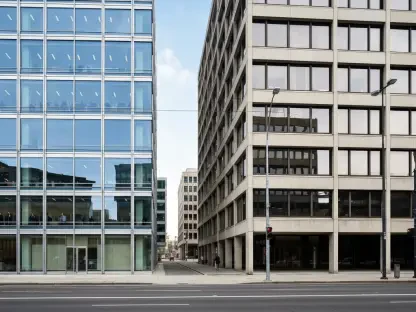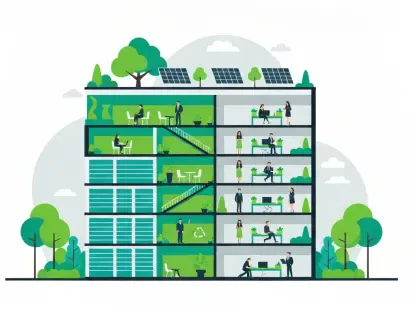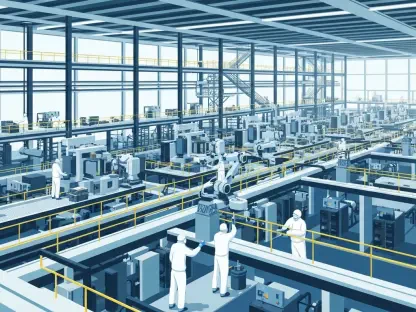In the ever-evolving landscape of architecture, engineering, and construction (AEC), technology continues to reshape how professionals design, plan, and execute projects, with digital tools becoming indispensable for tackling complex challenges. Autodesk, a leader in design software, is at the forefront of this transformation, leveraging artificial intelligence (AI) and cloud technology to redefine workflows and enhance efficiency across the industry. The company’s recent announcements at Autodesk University unveiled a bold vision for the future of AEC, centered on seamless integration, automation, and data-driven decision-making. By introducing innovative solutions and enhancing existing tools, Autodesk aims to bridge gaps between project phases and empower users to optimize performance at every stage. This strategic push not only addresses current industry pain points but also sets a new standard for collaboration and productivity in design processes.
Revolutionizing Design with Forma Solutions
Autodesk is redefining its AEC software portfolio through the introduction of a new suite of Forma solutions, designed to cater to diverse project needs with cutting-edge capabilities. The centerpiece of this initiative is the beta release of Forma Building Design, a sophisticated tool that delivers Building Information Modeling (BIM)-level detail at Levels of Development (LOD) 200/300. This solution incorporates AI-powered automation for intricate design tasks, alongside integrated analysis features that allow users to assess critical metrics such as carbon emissions and daylight optimization. By embedding these functionalities, Autodesk enables professionals to make informed decisions early in the design process, reducing costly revisions later. The focus on detailed building design within a cloud-based framework underscores a shift toward more agile and responsive workflows, ensuring that architects and engineers can iterate quickly while maintaining precision in their outputs.
Complementing this, Autodesk has rebranded its early-stage planning tool as Forma Site Design, positioning it alongside Forma Building Design as part of a broader strategy to tailor solutions for specific industries and project phases. This rebranding reflects a commitment to clarity and specialization, ensuring that each tool serves a distinct purpose within the design ecosystem. Meanwhile, the integration of AI-driven features within these solutions streamlines repetitive tasks, freeing up time for creative problem-solving. The emphasis on cloud technology further enhances accessibility, allowing teams to collaborate in real time regardless of location. As Autodesk expands the Forma suite, the potential for customized applications across various AEC sectors grows, promising a future where design tools are not just reactive but predictive, adapting to user needs with minimal manual input. This holistic approach signals a transformative step in how projects are conceptualized and executed.
Bridging Desktop and Cloud with Seamless Integration
A pivotal aspect of Autodesk’s strategy lies in creating a seamless connection between desktop and cloud environments, eliminating traditional barriers in data handling. Revit, a flagship desktop software, has been designated as the first “Forma Connected Client,” enabling users to access Forma’s cloud-based capabilities directly within the familiar interface. This integration allows for real-time environmental analyses, such as energy performance and sustainability metrics, without the need for cumbersome data exports or imports. By embedding cloud functionalities into desktop tools, Autodesk ensures that professionals can maintain their preferred workflows while benefiting from advanced computational power and collaborative features. This development marks a significant leap toward a unified design experience, where transitions between tools and platforms are virtually invisible to the end user.
Looking ahead, Autodesk plans to extend this level of integration to other desktop applications, broadening the reach of cloud-driven insights across its software ecosystem. Although specific tools slated for this upgrade remain undisclosed, the intention is clear: to create a cohesive environment where data flows effortlessly between local and remote systems. This interconnectedness not only boosts efficiency but also fosters collaboration among dispersed teams, as updates and analyses can be shared instantly. The reduction in manual data handling minimizes errors and accelerates project timelines, addressing a long-standing challenge in AEC workflows. As this integration expands, the industry can anticipate a future where the distinction between desktop and cloud becomes increasingly irrelevant, paving the way for a more fluid and responsive design process that adapts to the demands of modern projects.
Pioneering Efficiency through AI Innovations
Autodesk’s adoption of AI across its software suite represents a groundbreaking shift in how design tasks are approached, with automation taking center stage. The AI-powered Autodesk Assistant, now being rolled out to tools like Revit, AutoCAD, and Civil 3D, offers users the ability to automate repetitive processes and gain actionable insights through natural language prompts. For instance, in AutoCAD, this feature can instantly identify and flag violations of drawing standards, saving valuable time and ensuring compliance. Such advancements highlight how AI can transform mundane aspects of design into efficient, error-free operations, allowing professionals to focus on higher-value activities. The integration of intelligent assistance into everyday tools signifies a move toward smarter, more intuitive software that anticipates user needs.
Beyond basic automation, Autodesk is introducing “neural CAD,” a pioneering category of 3D generative AI foundation models within Forma and Autodesk Fusion. This technology aims to revolutionize CAD geometry creation by automating up to 90% of typical design tasks, fundamentally altering traditional workflows. By leveraging these models, designers can explore multiple iterations rapidly, with the system generating optimized solutions based on specified parameters. This not only accelerates the creative process but also enhances the quality of outcomes, as AI identifies possibilities that might be overlooked manually. The impact of neural CAD extends beyond efficiency, promising to redefine the role of designers as strategic thinkers rather than executors of routine tasks. As Autodesk continues to refine these AI capabilities, the potential for innovation in AEC grows exponentially, setting a new benchmark for what technology can achieve in design.
Reflecting on a Tech-Driven Legacy
Looking back, Autodesk’s recent strides in integrating AI and cloud technology into its AEC offerings marked a defining moment for the industry. The introduction of Forma Building Design brought unprecedented detail and automation to BIM processes, while Revit’s connection to the Forma cloud dismantled barriers between desktop and online environments. The deployment of tools like Autodesk Assistant and neural CAD showcased how automation could elevate efficiency, allowing professionals to prioritize creativity over routine tasks. These advancements collectively painted a picture of a more interconnected and intelligent design ecosystem. Moving forward, the challenge lies in adopting these technologies at scale, ensuring that teams are trained to leverage their full potential. Exploring partnerships and continuous updates will be crucial to sustaining this momentum, as will addressing data security in cloud-based systems. Autodesk’s legacy of innovation offers a foundation for future growth, inspiring the industry to embrace change with confidence.









